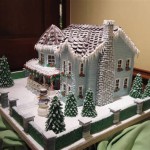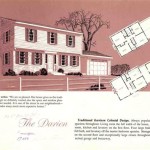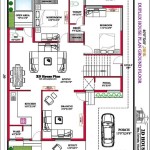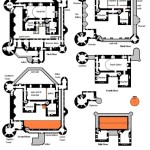Houses Built On Stilts: Plans and Considerations
Houses built on stilts offer a unique blend of practicality and aesthetic appeal. Elevating a structure above ground level provides numerous advantages, particularly in coastal areas or regions prone to flooding. However, building on stilts requires careful planning and consideration of various factors, from site selection to structural design. This article explores the key elements involved in planning and constructing a house on stilts.
Site Selection and Assessment
Choosing the right location is paramount for stilt house construction. The site should be thoroughly assessed for soil stability, flood risk, and wind exposure. Soil testing is crucial to determine the bearing capacity of the ground and inform the design of the foundation system. Understanding the flood history of the area helps determine the necessary height of the stilts. Similarly, assessing prevailing wind patterns is essential for ensuring structural integrity and minimizing wind load.
Foundation Design and Construction
The foundation of a stilt house is critical for stability and longevity. Various foundation types are suitable for stilt construction, including concrete piers, timber piles, or steel columns. The choice of foundation depends on factors like soil conditions, budget, and the overall design of the house. Properly engineered footings are essential to distribute the weight of the structure evenly and prevent settling or shifting. Corrosion-resistant materials should be used, particularly in coastal environments.
Stilts Material and Spacing
The stilts themselves can be constructed from various materials, including pressure-treated lumber, concrete, or steel. Each material offers different advantages and disadvantages in terms of cost, durability, and maintenance. Pressure-treated lumber is a cost-effective option but requires regular maintenance to prevent rot and insect damage. Concrete and steel offer greater durability and require less maintenance but come at a higher initial cost. The spacing of the stilts is determined by structural calculations and the anticipated load of the house.
Framing and Structural Design
The framing and structural design of a stilt house must account for the elevated nature of the construction. Wind loads and lateral forces become more significant factors in stilt houses compared to traditional ground-level structures. The framing system should be designed to resist these forces and ensure the stability of the house. Bracing and cross-bracing are often incorporated to enhance structural rigidity. Consultations with structural engineers are vital to ensure the structural integrity of the design.
Building Codes and Regulations
Compliance with local building codes and regulations is essential when constructing a house on stilts. These codes often have specific requirements for stilt house construction, addressing issues like foundation design, stilt height, and wind resistance. Obtaining the necessary permits and inspections is crucial for ensuring the safety and legality of the construction. Regulations might also dictate specific requirements for access, such as stairs or ramps, and considerations for utilities and services.
Utility Connections and Services
Planning for utility connections and services is an important aspect of stilt house design. Electrical wiring, plumbing, and HVAC systems must be carefully routed and protected from the elements. Considerations for insulation and ventilation are also important for energy efficiency and comfort. Access to these utilities for maintenance and repairs should also be factored into the design.
Maintenance and Accessibility
Regular maintenance is crucial for the longevity of a stilt house. Periodic inspections of the stilts, foundation, and framing are essential to identify any signs of damage or deterioration. Accessibility for maintenance and repairs should be considered during the design phase. Providing adequate access points for inspections and repairs can significantly reduce the cost and complexity of maintenance tasks.
:max_bytes(150000):strip_icc()/__opt__aboutcom__coeus__resources__content_migration__treehugger__images__2013__07__seabreeze_wide_560-b6cc09d6a730498fbfcef96b277a1cb7.jpg?strip=all)
Built On Stilts Karrie Jacobs A Strange New Kind Of House Being

House Design Plan Ch539 3 Stilt Plans On Stilts Carriage

Family S 576 Sq Ft Stilt Beach House

Modern Resort Type House With Stilt Concept Pinoy Eplans

Lofty Design Ideas For Tiny Homes On Stilts The Life

Floor Plans Of Custom Built Coastal Homes

Stilt Houses 10 Reasons To Get Your House Off The Ground

Piling Elevated Stilt And Pier Small House Plans Coastal Lake Front

Beach Front Coastal Stilts And Piling Home Building

Stilt Houses 10 Reasons To Get Your House Off The Ground
Related Posts








